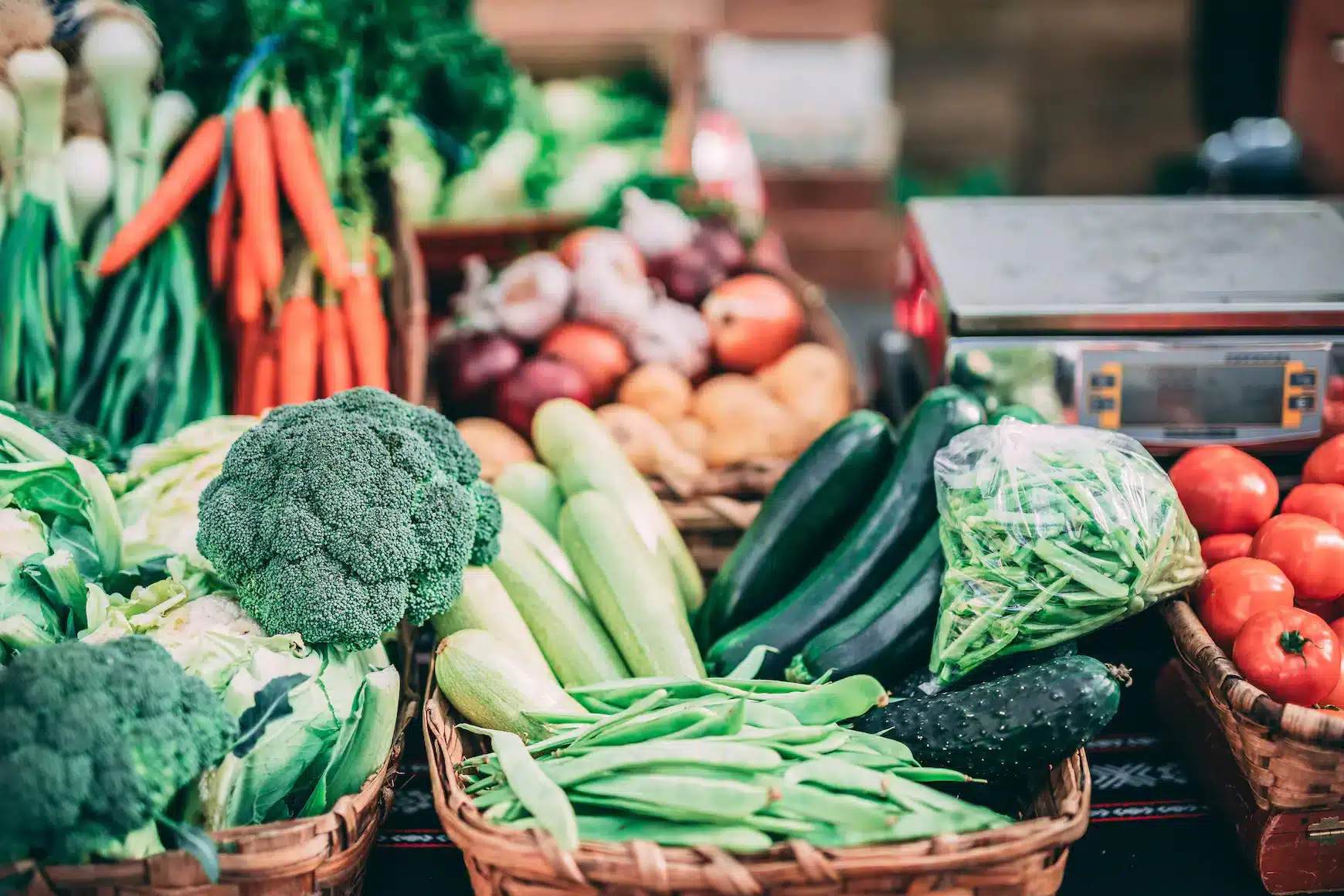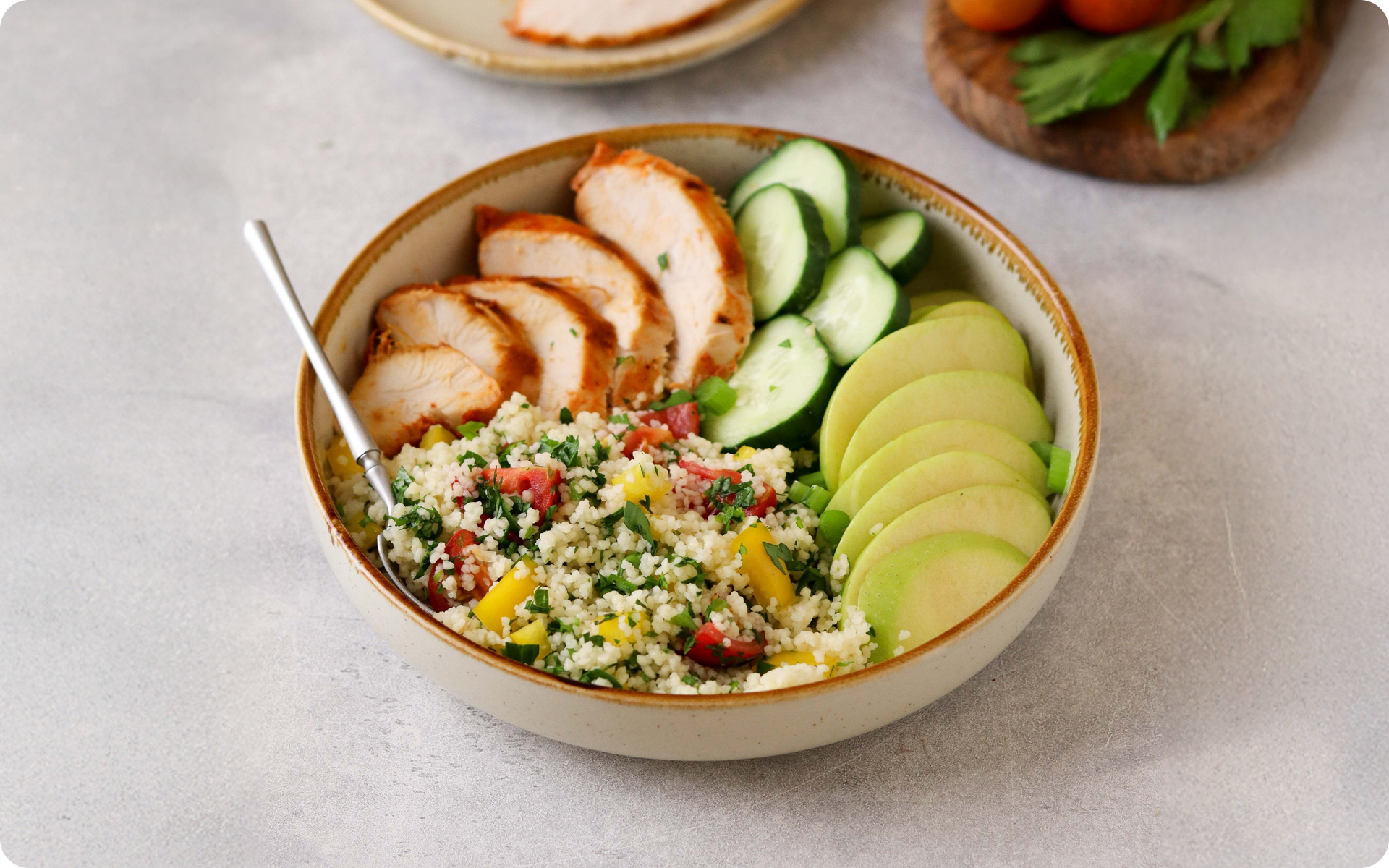All types of vegetables have one thing in common – they are powerhouses of essential nutrients vital for our well-being. It’s no wonder that the World Health Organization emphasizes the importance of vegetables in our diets, advocating for a wide range of types to be included in our daily meals.
Unraveling the vast types of a vegetable list can be a journey of discovery, leading you to unearth the kaleidoscope of colors, textures, and flavors available. But it’s not just about variety. Understanding how to cook these healthiest types of vegetables is key to unlocking their nutritional potential.
Whether they’re steamed, roasted, or stir-fried, each cooking method can enhance or preserve the valuable vitamins and minerals within. So, here’s what you need to know.
What Are The Types Of Vegetables?
Vegetables can be classified in several ways, including by the part of the plant that is consumed, its botanical family, and its nutritional content. Here are some common classifications:
1. Plant Part
This categorization is based on the edible part of the plant.
- Root vegetables such as carrots, beets, radishes, and turnips.
- Tubers such as potatoes and sweet potatoes.
- Bulbs such as onions, garlic, and leeks.
- Stem vegetables such as asparagus and celery.
- Leaf and leafstalk vegetables such as lettuce, spinach, and chard.
- Flower vegetables such as broccoli and cauliflower.
- Fruit vegetables such as tomatoes, eggplants, and bell peppers are technically fruits but are commonly considered vegetables.
2. Botanical Family
Vegetables can also be grouped according to their plant families, such as nightshades (tomatoes, eggplants), cruciferous vegetables (broccoli, cabbage), or legumes (peas, beans).
3. Nutritional Content
The U.S. Department of Agriculture groups vegetables into five subgroups based on their nutrient content: dark-green vegetables, red and orange vegetables, starchy vegetables, beans and peas, and other vegetables (7).
4. Growth Habit
Vegetables are also classified as annual or perennial crops based on whether they must be replanted each year or will produce crops for multiple years.
What Are The 3 Classifications Of Vegetables?
The three main classifications of vegetables are plant part, botanical family, and nutritional content. Here’s a comprehensive list of types of a vegetable list based on different classifications:
Based on Plant Part
The plant part is classified according to the edible portion of the vegetable.
- Root Vegetables: These grow underground and are known for their starchy quality. Examples include carrots, beets, parsnips, and potatoes.
- Stem Vegetables: These are the edible stems of plants. Examples include asparagus, celery, rhubarb, and kohlrabi.
- Leafy Greens: These are the edible leaves of plants, known for their high vitamin content. Examples include spinach, lettuce, kale, and Swiss chard.
- Fruit Vegetables: These are the fruits of plants that we categorize as vegetables due to their savory flavor. Examples include tomatoes, cucumbers, bell peppers, and zucchini.
- Seed Vegetables: These are the seed-bearing parts of plants. Examples include corn, green beans, peas, and okra.
- Flower Vegetables: These are the flowering parts of plants. Examples include broccoli, cauliflower, artichokes, and Brussels sprouts.
Based on Botanical Family
The botanical family is classified according to the plant’s family.
- Nightshades: These belong to the Solanaceae family and are often rich in vitamins A and C. Examples include tomatoes, potatoes, eggplants, and bell peppers.
- Cruciferous Vegetables: These belong to the Brassicaceae family and are known for their high fiber and vitamin content. Examples include broccoli, cauliflower, cabbage, and Brussels sprouts.
- Legumes: These belong to the Fabaceae family and are rich in protein and fiber. Examples include peas, lentils, chickpeas, and green beans.
- Alliums: These belong to the Amaryllidaceae family and are known for their strong flavors. Examples include onions, garlic, leeks, and shallots.
Based on Nutritional Content (USDA Classification)
The nutritional content is classified according to the vegetables’ nutrient content.
- Dark-Green Vegetables: These are packed with vitamins K, A, and C. Examples include spinach, broccoli, kale, and romaine lettuce.
- Red and Orange Vegetables: These are rich in vitamins A and C. Examples include carrots, sweet potatoes, red bell peppers, winter squash, and tomatoes.
- Starchy Vegetables: These are high in carbohydrates. Examples include potatoes, corn, and green peas.
- Beans and Peas: These are high in protein and fiber. Examples include black beans, kidney beans, lentils, and chickpeas.
- Other Vegetables: These offer a variety of nutrients. Examples include cucumbers, celery, zucchini, and green peppers.
Read more: How To Make Vegetables Taste Good? 8 Vegetable Ideas And Recipes
How To Cook Different Types Of Vegetables For Maximum Nutrition And Flavor
The key to maximizing both nutrition and flavor is to use fresh, high-quality vegetables and cook them as soon as possible after purchase. Aim for a variety of cooking methods to enjoy the wide range of flavors and textures that vegetables can offer. Here are some tips on how to cook different types of vegetables for maximum nutrition and flavor:
Steam
Steaming is an excellent method for cooking vegetables without losing nutrients. It’s especially good for broccoli, cauliflower, and carrots. Steaming softens the vegetables while keeping them vibrant and flavorful.
Roast
Roasting vegetables brings out their natural sweetness and adds a delightful crispiness. This method is great for root vegetables like potatoes, carrots, beets, and parsnips. Toss them in a little olive oil, sprinkle with salt, and roast at a high temperature until they’re tender and caramelized.
Saute
Sauteing is a quick and easy way to cook vegetables while retaining most of their nutrients. It’s particularly good for bell peppers, onions, and zucchini. Use a small amount of healthy oil like olive oil, keep the heat medium-high, and stir frequently.
Grill
Grilling adds a smoky flavor that can make vegetables taste amazing. It’s a great method for bell peppers, onions, eggplant, and asparagus. Lightly brush the vegetables with oil, place them on a hot grill, and turn occasionally until they’re nicely charred.
Boil
While boiling can cause water-soluble vitamins to leach out of vegetables, it’s a good method for starchy vegetables like potatoes and corn. To minimize nutrient loss, use as little water as possible and cook for a short time. You can also use the cooking water for soups or sauces to still get whatever nutrients leached into the water.
Microwave
Microwaving uses little to no water and can cook vegetables quickly, helping to preserve nutrients. It’s a good method for almost any vegetable. Just place the vegetables in a microwave-safe dish, add a little water, cover, and cook on high.
What Is The Most Universal Vegetable?
Based on the search results from various sources, tomatoes appear to be the most universal vegetable. They are grown and consumed in numerous countries around the world, making them a truly international staple.
In addition, tomatoes are highly versatile, being used in a wide range of dishes, from salads and sandwiches to sauces and stews. Furthermore, they are packed with beneficial nutrients like vitamin C, potassium, and the antioxidant lycopene, contributing to their widespread popularity (3).
While tomatoes are indeed widely grown and consumed worldwide, determining the “most universal” vegetable can be subjective and depends on various factors, such as cultural preferences, agricultural practices, and regional availability.
Potatoes, onions, and carrots also globally cultivated and utilized in diverse cuisines, making them strong contenders for the title as well. It’s important to note that different sources might highlight different vegetables as the “most universal” due to these varying factors.
Looking for a way to break the vicious cycle of weight loss and tone up all the jiggly parts? Watch the extra pounds fly off and your muscles firm up with the BetterMe app!
How Many Types Of Vegetables Per Day?
According to the United States Department of Agriculture (USDA), adults should consume a variety of vegetables as part of a balanced diet. The USDA’s dietary guidelines suggest that adults should aim to eat anywhere between 2 and 3 cups of vegetables each day (6).
The variety is crucial because different types of vegetables offer different nutritional benefits. They recommend that your vegetable intake include a mix of:
- Dark-green vegetables, such as spinach, kale, and broccoli, are rich in vitamins K, A, and C.
- Red and orange vegetables, such as carrots, bell peppers, and tomatoes, are high in vitamins A and C, and potassium.
- Legumes, such as beans and peas, are a good source of fiber, protein, and other nutrients.
- Starchy vegetables, such as potatoes and corn, provide vitamin C, potassium, and B vitamins.
- Other vegetables, including zucchini, onions, and cucumbers, each with their unique nutrient profiles.
The serving size can vary depending on the type of vegetable. For instance, two cups of raw leafy greens count as a cup from the vegetable group, while for most other vegetables, one cup equals one cup from the group.
Bear in mind that these are general recommendations and individual needs may vary based on age, sex, physical activity level, and overall health. Consulting with a healthcare provider or a registered dietitian for personalized advice is always a good idea.
Read more: Super Vegetables: Fiber And Antioxidant Bombs That Should Be On Your Plate Daily
Frequently Asked Questions
How many types of vegetables are there?
A: There are an estimated 20,000 species of edible plants in the world, with vegetables making up a significant portion of this count. However, only about 20 of these species make up 90% of what we consume (2). This means that there are potentially thousands of different types of vegetables out there.
The exact number of vegetable types is hard to quantify due to the varying definitions of what constitutes a vegetable. Some sources suggest that there are more than 1,097 types of vegetables cultivated worldwide (5).
Which types of fruits and vegetables should you avoid?
A: While most fruits and vegetables are healthful and nutritious, there are a few that you might want to avoid or consume in moderation depending on specific dietary needs or allergies.
For instance, people with chronic kidney problems may be advised to avoid fruits and vegetables high in potassium like bananas and potatoes (1). People looking to control their blood sugar might limit fruits high in natural sugars like grapes and pineapples.
As for vegetables, those high in oxalates, such as spinach, beetroot, and rhubarb, can contribute to a certain type of kidney stones in susceptible individuals (4). Also, starchy vegetables like potatoes and corn might be limited on low-carb diets. Always consult a healthcare provider or a dietitian for personalized advice.
BetterMe app is a foolproof way to go from zero to a weight loss hero in a safe and sustainable way! What are you waiting for? Start transforming your body now!
Which types of vegetables are high in carbohydrates?
A: Certain types of vegetables are higher in carbohydrates than others, particularly starchy vegetables. These include potatoes, corn, peas, and winter squash.
Root vegetables like carrots and beets also contain more carbs than leafy greens or cruciferous veggies. However, all vegetables provide valuable nutrients and can be part of a balanced diet.
What types of vegetables do I actually need?
A: The types of vegetables you need can depend on your specific dietary requirements and goals. However, a varied intake is generally recommended to ensure you get a wide range of nutrients.
Try to include a variety of colors in your diet – green (spinach, broccoli), red and orange (tomatoes, carrots), legumes (beans, lentils), starchy (potatoes, corn), and others (cauliflower, mushrooms). Each color and type offers different nutrients, so a colorful plate can help ensure you’re getting a balanced intake.
Bottom Line
Understanding the different types of vegetables and the best ways to cook them can significantly enhance your diet’s nutritional value. From leafy greens to root veggies, each type offers unique nutrients and benefits.
By applying the right cooking methods, you can maximize these benefits and enjoy a healthier, more varied diet.
Get your personalized
meal plan!
DISCLAIMER:
This article is intended for general informational purposes only and does not serve to address individual circumstances. It is not a substitute for professional advice or help and should not be relied on for making any kind of decision-making. Any action taken as a direct or indirect result of the information in this article is entirely at your own risk and is your sole responsibility.
BetterMe, its content staff, and its medical advisors accept no responsibility for inaccuracies, errors, misstatements, inconsistencies, or omissions and specifically disclaim any liability, loss or risk, personal, professional or otherwise, which may be incurred as a consequence, directly or indirectly, of the use and/or application of any content.
You should always seek the advice of your physician or other qualified health provider with any questions you may have regarding a medical condition or your specific situation. Never disregard professional medical advice or delay seeking it because of BetterMe content. If you suspect or think you may have a medical emergency, call your doctor.
SOURCES:
- Eating Right for Chronic Kidney Disease (2016, niddk.nih.gov)
- Ethnobotanical appraisal and cultural values of medicinally important wild edible vegetables of Lesser Himalayas-Pakistan (2013, biomedcentral.com)
- Nutritional Composition and Bioactive Compounds in Tomatoes and Their Impact on Human Health and Disease: A Review (2020, mdpi.com)
- Risk of Kidney Stones: Influence of Dietary Factors, Dietary Patterns, and Vegetarian–Vegan Diets (2020, mdpi.com)
- Traditional and Indigenous Fruits and Vegetables for Food System Transformation (2021, sciencedirect.com)
- Vegetables (n.d., myplate.gov)
- What foods are in the Vegetable Group? (2019, ask.usda.gov)











